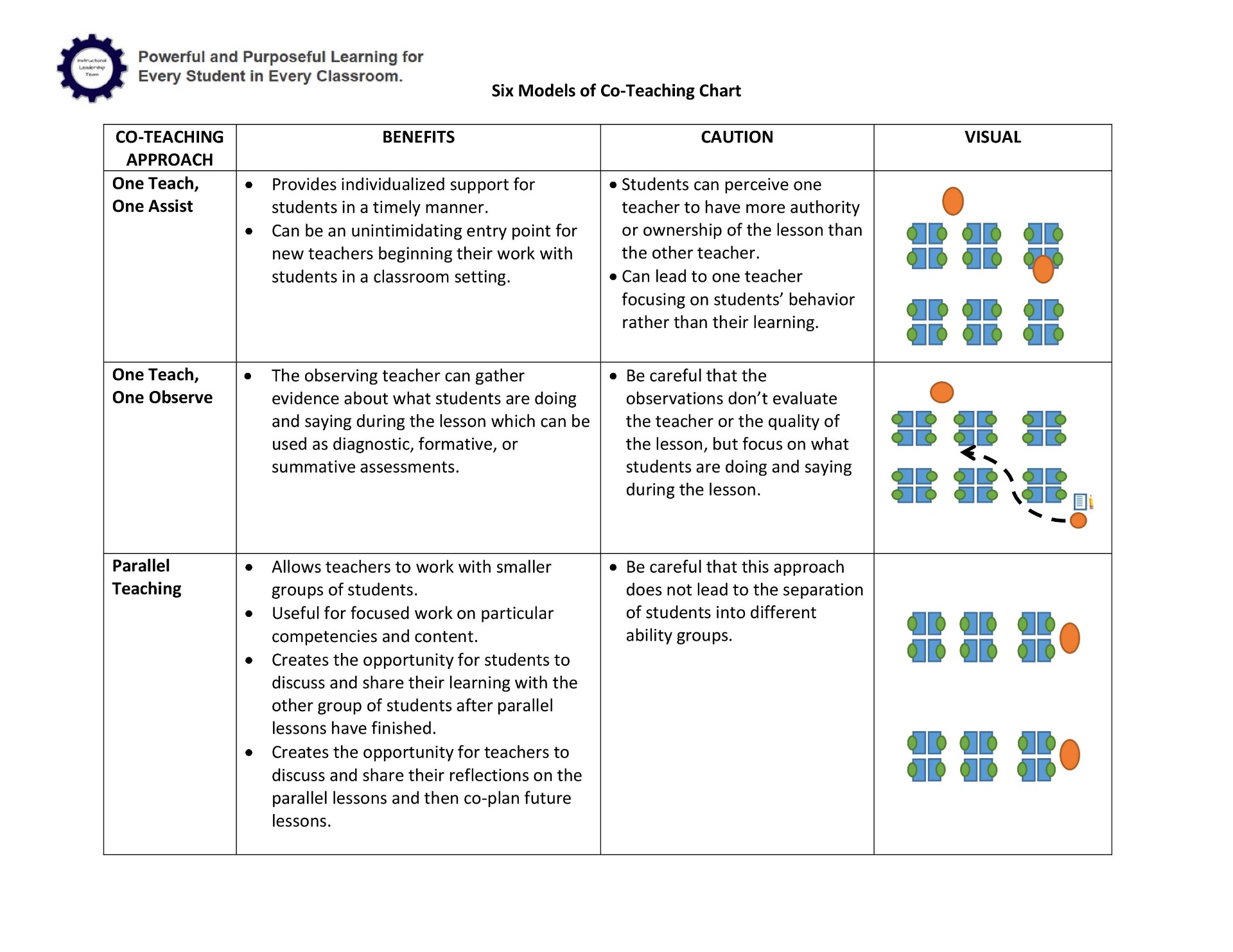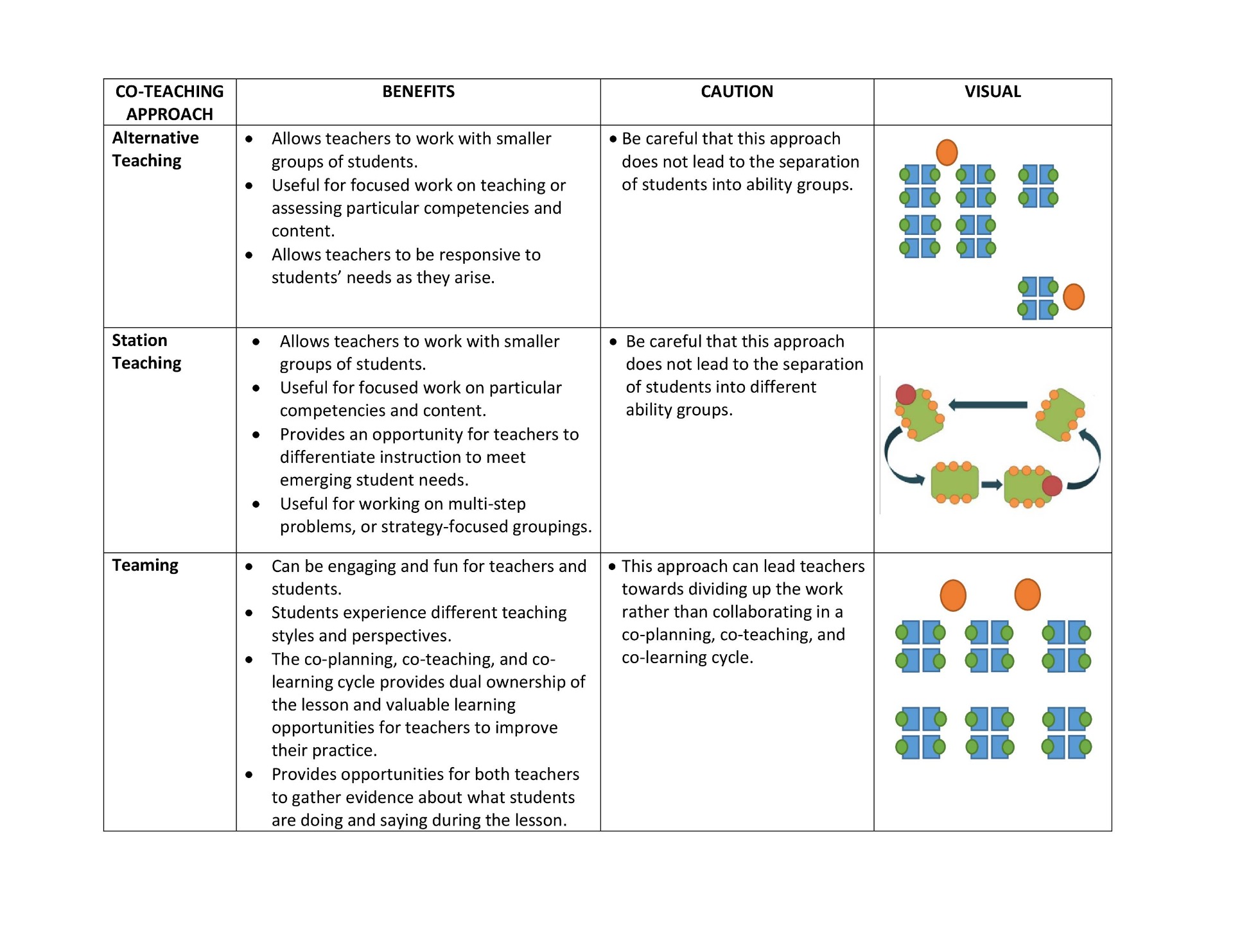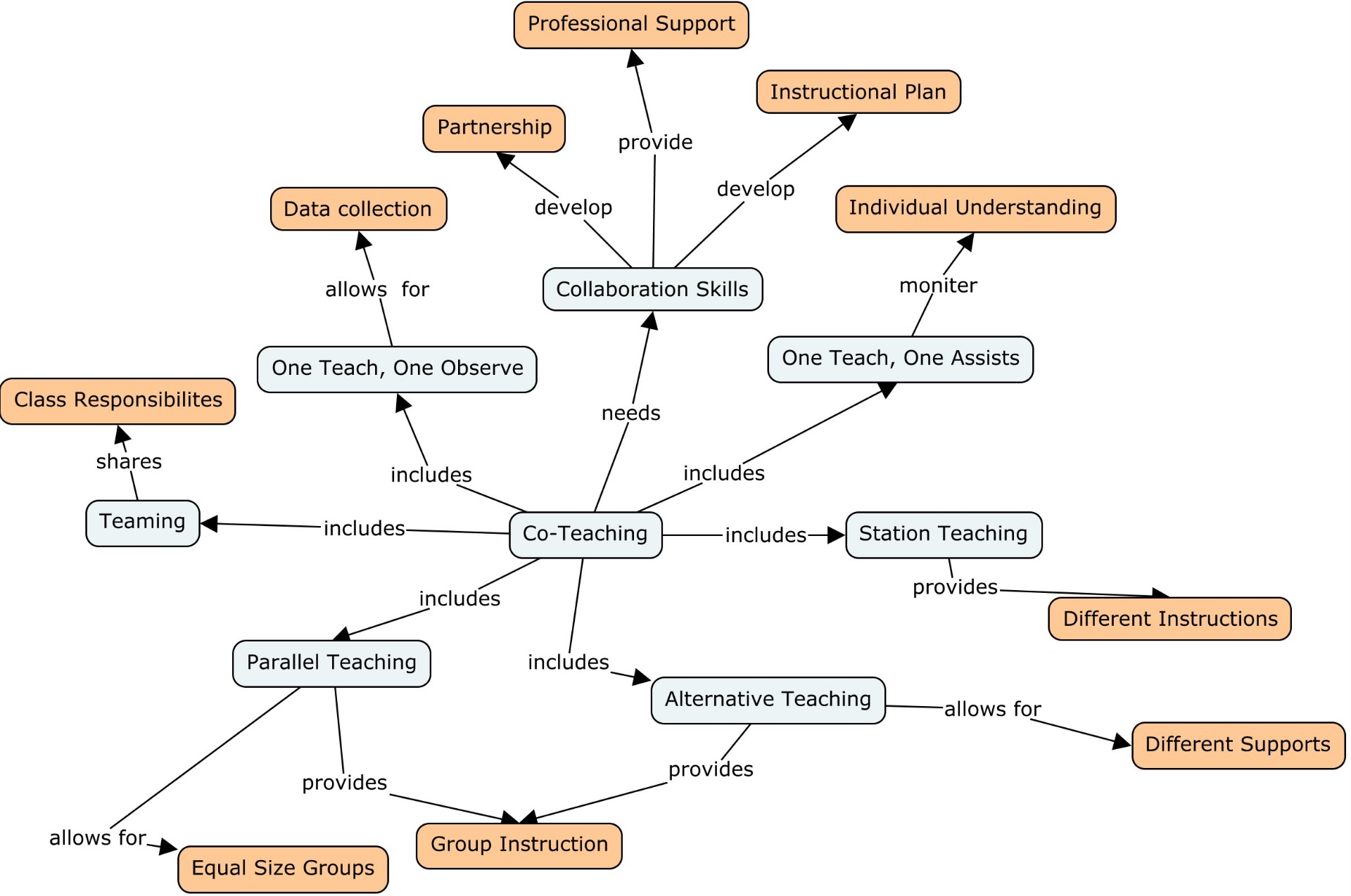Competency 6: Effective Practice for Planning and Designing Co-Teaching and Collaboration with Peers
Co-Teaching
In my research on co-teaching I came across this great chart on the pros and cons of the 6 methods of co-teaching practices.


Fig 2. Six Models of Co-Teaching Chart. (n.d.). Retrieved from https://education.ok.ubc.ca/__shared/assets/coteaching57138.pdf11
How to Co-Teach a Lesson
Imagine an Algebra 1 teacher has a class of 20 students. Some of these students may have different abilities and need some accommodations throughout the lesson, which means a co-teacher may be present in the class. So how could you adapt a lesson to the 6 different co-teaching methods? And which is the best?
Original Lesson: There is a mathematics teacher without a co-teacher who will be teaching students a lesson on the quadratic formula. In this lesson she will hand out the notes for the day and teach a prepared lecture with explicit instruction. There will be opportunities for her to present the material, model it, then allow the students to try on their own.
One Teach, One Assist: In this co-teaching model the mathematics teacher may take on the role of lead and go on with her prepared lesson. The difference is, the lead teacher will have the support of another teacher who knows the material to help students focus and allow them to get help faster.
One Teach, One Observe: For this co-teaching method the lead teacher would continue with her planned lesson while the co-teacher observed students behavior and achievement in order to better plan lessons, and get students the resources they need.
Parallel Teaching: In this method, the class would be divided in two seperate groups with each teaching a group of students. They do this in parallel and this allows for students to receive instruction in a smaller group.
Alternative Teaching: For this method, the students will be divided into a smaller and larger group, not based on ability. This method allows both teachers to teach the large and small on differing days. Students get to experience different teachers and perspectives.
Stations Teaching: To co-teach this method both teachers sit at different stations and the students rotate. Not all the stations have a teacher there, some may have worksheets, or group work.
Teaming: In this last method, both teachers would lecture the lesson helping one another and following the original lesson plan. This method allows for all the work and responsibilities to be shared.
The method that is best often depends on the material being taught, and the personalities of the teachers. Most methods will work in any environment making communication between teachers key.
Concept Map on Co-Teaching

The Importance of Collaboration
In any classroom situation, the most important aspect is communication. In order to effectively teach all students you must create plans for with other teachers, administrators, and parents. Parents know their children best, and administrators know what services are available. Teachers are left to be advocates and implement services. In order for everything to run smoothly, everyone needs to be on the same page. That requires collaboration and communication.
For more information on the importance of collaboration view the articles below: